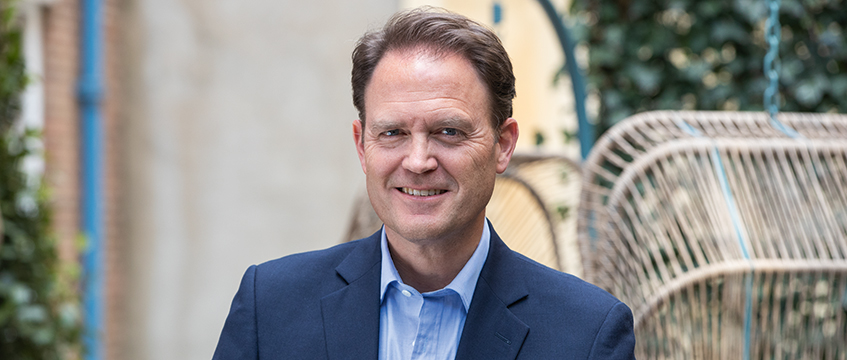GPE is eyeing almost £2bn of potential acquisitions as the investor-developer continues to take advantage of what its top team sees as a turning point for London’s office market.
Since the company announced in May that it was back in the market for buying, it has acquired the Courtyard at 1/3 Alfred Place, WC1, for £28.6m from the City of London Corporation; 19-23 Wells Street, W1, for £19m from British Land; and Whittington House, WC1, for £58.5m from an exiting owner-occupier.
“The conditions we identified in the summer that we were interested by have turned out to be the reality,” chief executive Toby Courtauld tells EG. “We have been able to buy at 60% discounts to replacement costs. And I think we will do more of that. We may not be able to operate at the same rate that we have in the last four months for the next period in the year. But we will certainly be buying and I am pretty sure we will be buying at discounts for replacement costs as well.”
The company now has eight assets on its A-list; targets for which it has good details and has already made assumptions around capital expenditure needs. Those have a combined quoted price of £187m and assumed capex of £467m. GPE reckons it will complete on some £247m of those £654m of opportunities.
On its 11-asset B-list, where the team has less detail, it expects to pick up £145m of £777m of deals (the company has no capex factored into these).
With 15 assets on a watchlist valued at about £950m, that means the company is weighing up 33 possible deals in total, valued at just over £1.9bn.
“It’s a very dynamic list,” Courtauld says. “Even last week we had three new things on the B-list, but all three of them arguably should now be on the A-list. This week, one of our acquisition team came running along the corridor, super excited about a deal that had just emerged from nowhere that we had on no list. Even this morning, I had somebody WhatsApp me saying, ‘Can we have a conversation about a building that I think you’ll love?’”
Seventy per cent of GPE’s A- and B-list would be off-market, almost all in the West End and Midtown. Courtauld is happy that the company’s activity since it raised £350m of fresh equity to splash on new deals means that agents are eager to flag new targets.
“Something happens when you print trades as we did this week with Whittington,” he says. “The agency community, which is obviously one of the lifebloods for us, is very short term in its attention span, always looking to the next deal. When they see somebody buying with a big balance sheet doing interesting deals, guess who gets all the calls?”
Asset supply in the market has grown since May but is still low at £4.9bn, the chief executive says. Roughly 40% of that comes from sellers motivated by issues around debt and refinancing.
“Time could show that interest rates not coming down as fast, more pressure on those with debt, means they are a bit more motivated to sell,” Courtauld adds. “But of the things that we have been buying, none of those owners was genuinely distressed or even close to being. They were all sellers because they just didn’t need the building anymore or didn’t want to invest in the building.”
Is competition for these deals increasing as other potential buyers see the same opportunity GPE does? “It’s not a very deep field, bluntly,” Courtauld replies. “You can see that in the quantity of equity looking to invest in London. It has halved in the last four or so years from circa £40bn to about £20bn. That said, it has risen in the last six months from £19bn to £20bn.”
That growth has come from European institutional investors, which Courtauld says are “not really competition”, but also a rise in the US investor base, which can be. On the Whittington House sale, he adds, there was at least one US-backed player “very keen” on a deal – “and they were about a half a bar behind us”.
“They are typically core-plus and opportunistic buyers looking for value,” he says. “But we should be able to run quicker than them. We are more nimble because we are often smaller than they are. We are local. We are turning more stones more regularly than most of them.”
Send feedback to Tim Burke
Follow Estates Gazette











